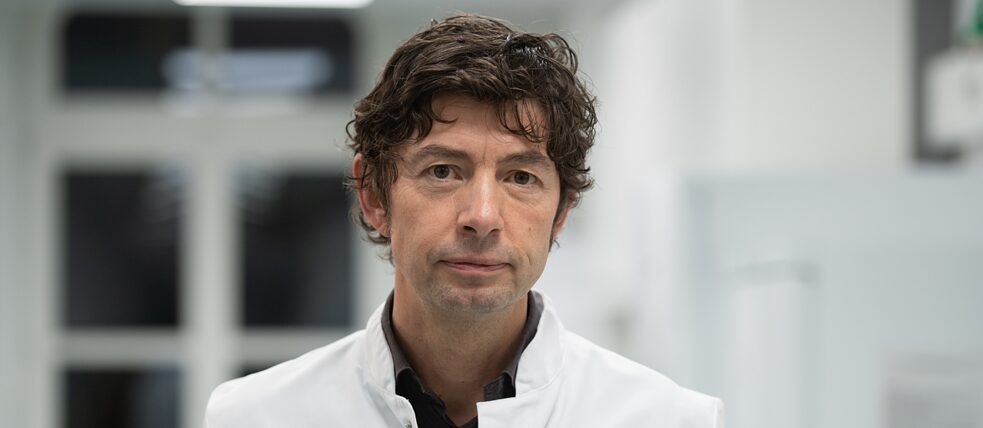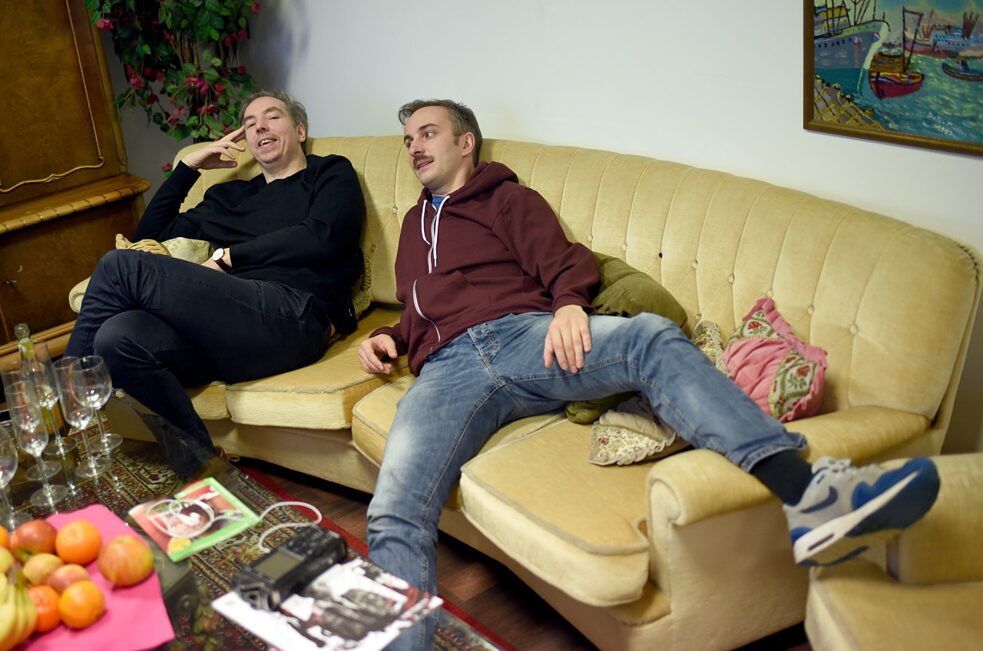Podcasts
The attractiveness of the auditory experience

One in every four Germans listens to podcasts, and in the United States it is one in every two people. What makes the audio programs so popular and who is involved in the German-speaking podcast scene?
Podcasts are booming – on iTunes alone, in April 2020, you could choose from more than a million different podcasts with a total of over 30 million individual episodes – and new ones are being added every day.
The USA is the global pioneer of this development. Back in 2005, the New Oxford American Dictionary had already selected the portmanteau word “podcast” as word of the year. Podcast is composed of “pod” – depending on the interpretation, an abbreviation for “play on demand" or “ipod” – and the syllable “cast” from “broadcast”. Today, more than one in every two Americans has subscribed to a podcast. In Germany, every fourth person listens to such programs on a regular basis. In the young audience of 16 to 29 year olds, it is even more than one in three. What makes these audio series so popular?
Educational programs for passive learning
Many listeners see podcasts as an opportunity to deal in everyday life with topics that are not given enough space in classic media formats. Unlike listening to the radio, they can decide what they want to hear. In addition, they can consume podcasts while doing all kinds of other activities at the same time – for example, when commuting, doing sports or while doing household chores. This is exactly where the format’s potential lies – you can use a larger part of your everyday life to take part in targeted further training or to be entertained.
 Virologist Christian Drosten explains the latest findings on the corona pandemic every week in the NDR podcast.
| Photo (detail): © picture alliance/dpa/Christophe Gateau
Virologist Christian Drosten explains the latest findings on the corona pandemic every week in the NDR podcast.
| Photo (detail): © picture alliance/dpa/Christophe Gateau
The individual programs are very different. Some tell stories via a string of several episodes, others deal with a specific subject area, others focus on interviews. According to a Bitkom study in Germany, most listeners are interested in programs from the fields of politics and news, followed by film and television, sports and leisure, and comedy. But podcasts on scientific topics are also popular. This is why more and more universities are making their lectures available in this form. The most popular in Germany at the moment are the satirical dialogues between Jan Böhmermann and Olli Schulz in their podcast Fest & Flauschig. The format is said to have several 100,000 listeners every week and that is usually enough to take first place in the Spotify charts.
 Fest & flauschig - satirists Jan Böhmermann and Olli Schulz on their cosy couch.
| Photo: © picture alliance/dpa/Henning Kaiser
Fest & flauschig - satirists Jan Böhmermann and Olli Schulz on their cosy couch.
| Photo: © picture alliance/dpa/Henning Kaiser
Hoping to make a million dollars
With more than a million podcasts on iTunes alone, it can be assumed that only a part of this overwhelming product range is commercially successful. At the top of the podcast charts, however, there are millions of dollars to be made. The Joe Rogan Experience, with 200 million monthly downloads, is the most successful podcast in the United States, grossing around $30 million in 2019.
There are several ways to make money with a podcast. One is to make an exclusive deal with Apple, Spotify, or another streaming service. Spotify signed The Joe Rogan Experience in May 2020 – probably with the aim of winning over the huge audience. Podcast producers with few fans usually never receive such offers. Instead, they have to try and sell subscriptions or try to generate donations from fans. Another option is advertising – sponsored episodes and product placement are also not uncommon in the podcast world.
The making of a podcast
It is particularly attractive for the operators of podcasts that the audio programs can be produced quite easily. The first step into the world of podcast production is quick. “Basically, running a podcast is very easy and cheap. All you need is a recording device – that would be possible with a smartphone – and an RSS feed in the right format to be listed on the various platforms,” explains Alexander Stegisch, podcast expert and co-operator of the Austrian football fan format Spielfrei.
With his creative agency, Stegisch also supports other podcast operators in the setting up and technical implementation of their format. Although the basic principle of “record – upload - listen” seems simple, the road to a successful podcast can still be a long one, he explains, “As easy as starting a podcast is, improving the quality takes a lot of time. Recording devices, microphones, sound panels, et cetera – there are many areas that might have to be optimised. Until we managed to find the right microphones for us at Spielfrei, things had already started piling up in the lobby.” Then there is post-production, that is cutting and editing a podcast before it is released. “It is time-consuming. But here, too, you can save money and work with free software such as Audacity. Alternatives like Adobe Audition are fee-based, but it helps things to move a little faster.”